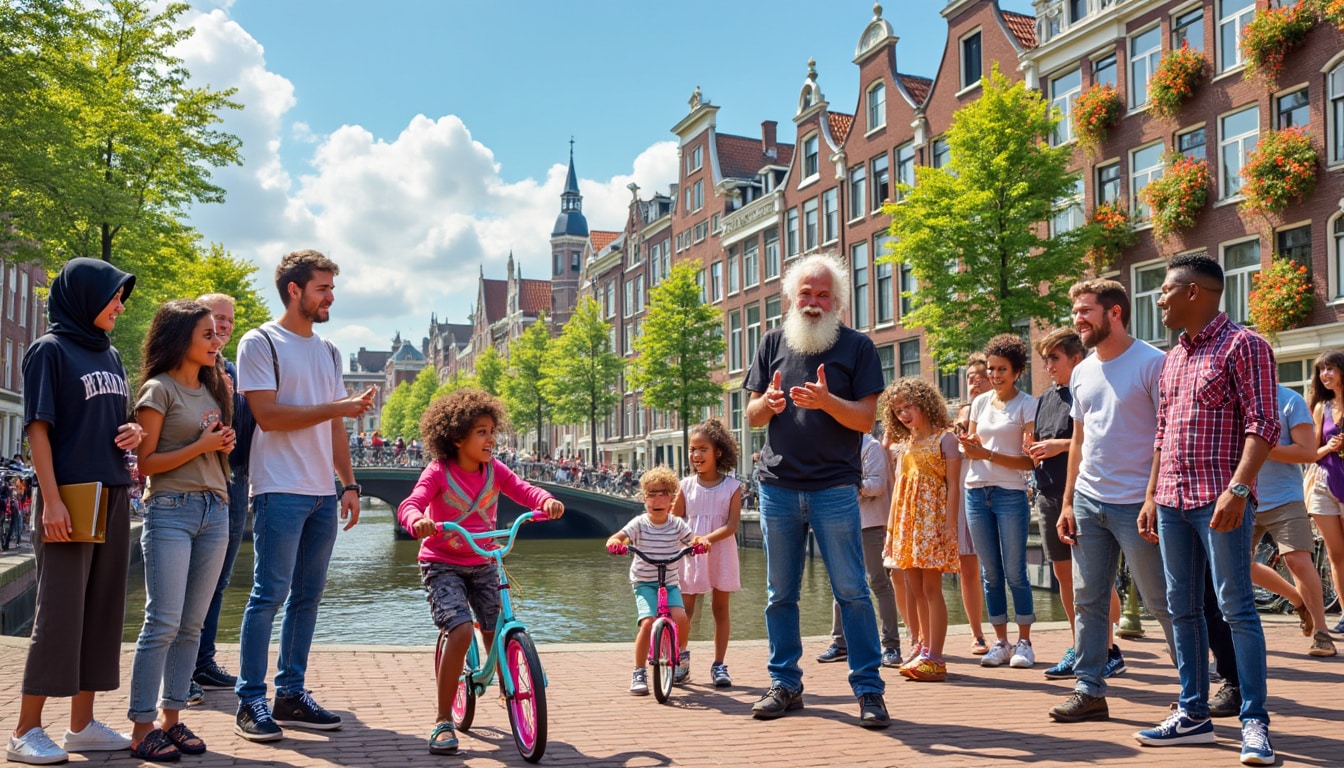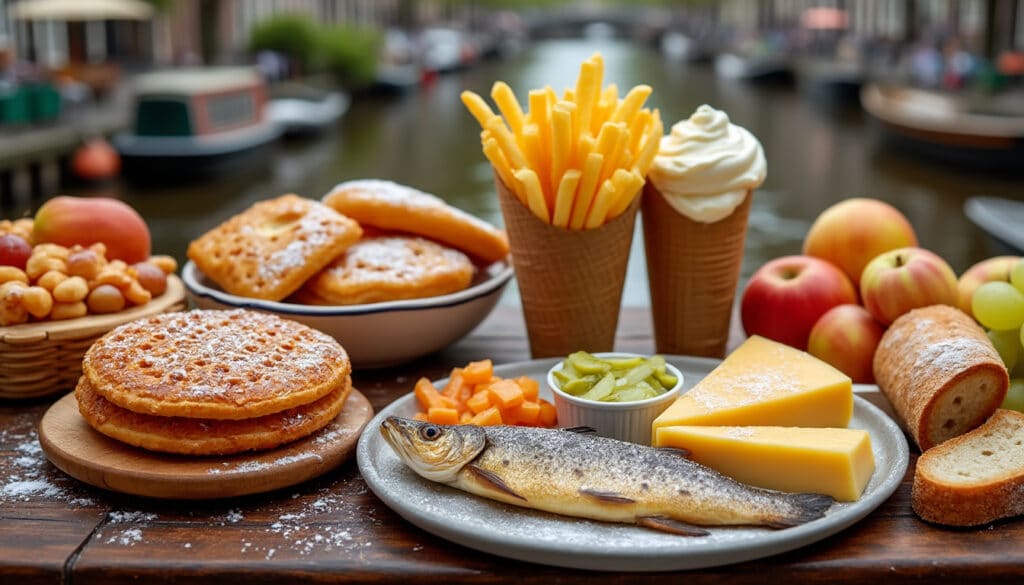Amsterdam, a city renowned for its picturesque canals and vibrant culture, also stands out for its multilingual character. As a melting pot of cultures, languages are integral to the daily life of its residents and visitors. This article delves into the linguistic tapestry that makes Amsterdam an exemplary cosmopolitan city, exploring the prevalence of Dutch, English, and other languages that shape its unique identity. Understanding these languages not only enriches one’s experience in Amsterdam but also provides a glimpse into the city’s historical and contemporary landscape.
The Prevalence of Dutch in Amsterdam
Dutch is the official language of the Netherlands and naturally, the primary language spoken in Amsterdam. With deep roots in the Germanic language family, Dutch has evolved into a nuanced, distinctive form known as ‘nederlands.’ The city’s vernacular includes a local dialect called ‘Amsterdams,’ a part of the Low Saxon Dutch group, that lends a special flavor to the city’s speech. This dialect, though subtle, represents the individuality of Amsterdam within the larger Dutch framework.
The evolution of Dutch as the native language of the Netherlands is a story of the region’s historical and cultural developments. Originating from the Germanic tongues of the early Middle Ages, Dutch emerged as a dominant language due to the political and social maturation of the area. As such, Dutch serves not just as a means of communication but as a cultural emblem, resonating in local festivals, literature, and everyday customs.

Globally, Dutch stands as the third most spoken Germanic language, boasting around 40 million speakers worldwide. Beyond its practical utility, Dutch sustains a sense of community and cultural pride, reinforcing the national identity of the Netherlands. In Amsterdam, the language’s importance is particularly evident in public life, from business and education to government affairs, making it indispensable for full participation in civic responsibilities.
Historical Influences on Dutch Language
The Dutch language has been shaped by various European influences, including those of Germany, France, and Great Britain. This complex historical tapestry is reflected in the multitude of loanwords and grammatical structures present in modern Dutch. Additionally, the city’s historical role as a trading hub contributed significantly to its linguistic diversity, as traders from different regions left their mark on the local speech patterns.
Furthermore, the city’s position as a cultural and economic center has meant that Dutch has remained a vibrant, living language, continually evolving as it absorbs influences from the diverse populations that call Amsterdam home. This dynamic adaptation process underscores the resilience and adaptability of the Dutch language, ensuring its continued relevance in an ever-globalizing world.
English Proficiency in the Heart of Amsterdam
English proficiency in Amsterdam is among the highest globally, earning the city a reputation as one of the world’s most English-friendly areas. An astounding 90% of Amsterdam’s population speaks English fluently, facilitating effortless communication for native English speakers. This proficiency is a testament to the city’s cosmopolitan ethos, where seamless cross-cultural interactions are both possible and encouraged.
The prevalence of English is particularly noticeable in sectors like business, education, and tourism. Whether in a historic café along the canals or a bustling market, English is routinely used to bridge communication gaps, making life in Amsterdam smooth for expatriates and travelers alike. Public signs, transportation announcements, and important services such as Schiphol Airport frequently offer information in both Dutch and English, further simplifying interactions for non-Dutch speakers.
English in Daily Life
- Business: Many companies operate in English, especially those with international dealings. 🌍
- Education: Universities often offer programs entirely in English, attracting students globally. 🎓
- Tourism: Tour guides and service staff are well-versed in English, providing a comfortable stay for visitors. 🏨
Education and English Mastery
A significant factor behind Amsterdam’s English proficiency is its education system, which emphasizes the learning of English from an early age. Schools often integrate English into the curriculum, and many higher education institutions offer courses in English, making the city an attractive destination for international students. This dedication to language education reflects Amsterdam’s global perspective, fostering an environment where languages coexist and complement each other harmoniously.
The emphasis on English is further bolstered by the media, with many television programs, movies, and music in English. This cultural immersion allows residents to practice and refine their English skills continually, contributing to the high level of fluency observed across the population.
Exploring Amsterdam’s Multilingual Diversity
Beyond Dutch and English, Amsterdam’s linguistic landscape boasts a rich tapestry of other languages, reflective of its multicultural populace. The city is home to vibrant communities speaking languages like Arabic, Turkish, and Berber, each adding unique hues to Amsterdam’s cultural mosaic. This diversity underscores Amsterdam’s role as not just a cultural hub, but a living testament to globalization.
Immigration has played a pivotal role in shaping this linguistic variety. Communities from Morocco, Turkey, and other regions have settled in Amsterdam, bringing their languages and traditions with them. As the younger generations grow up in Amsterdam, they often become bilingual or multilingual, speaking both their native language and Dutch, which promotes cultural integration and mutual understanding.
Language Diversity in Amsterdam
| Language | Community Representation | Role in Amsterdam |
|---|---|---|
| Dutch 🇳🇱 | Majority language of residents | Foundational for all civic and social activities |
| English 🇬🇧 | Widely spoken by locals and expatriates | Facilitates international communication |
| Arabic 🇸🇦 | Concentrated within the Moroccan community | Preserves cultural heritage and identity |
| Turkish 🇹🇷 | Commonly spoken among Turkish immigrants | Supports community cohesion and cultural practices |
| Berber 🌍 | Smaller, yet significant speaker base | Contributes to linguistic diversity |
The result is a dynamic, multilingual environment where languages organically blend into the city’s daily rhythm. The linguistic capabilities of Amsterdam’s inhabitants not only enhance personal interactions but also offer practical advantages in a globalized economy. For instance, businesses benefit from the ability to engage with international clients in multiple languages, reflecting Amsterdam’s inclusive approach to global commerce.
Languages and Technology: Learning Tools for Amsterdam’s Languages
For those keen on immersing themselves in Amsterdam’s linguistic diversity, various language learning tools can be invaluable. Platforms like Duolingo, Babbel, and Rosetta Stone offer resources to learn Dutch, English, and other languages spoken in the city. These platforms provide an engaging way to grasp basic language skills, perfect for tourists preparing for their trip or new residents looking to integrate smoothly.
Additionally, services such as Pimsleur and Busuu focus on conversational language skills, promoting practical use over rote memorization, which is essential in a cosmopolitan setting like Amsterdam. For those who prefer interactive learning experiences, platforms such as italki and Tandem connect users with native speakers for real-time practice, facilitating a deeper understanding and appreciation of the language.
- Duolingo: Perfect for gamified learning while commuting. 🚲
- Babbel: Offers structured lessons tailored to individual needs. 📚
- Rosetta Stone: Excellent for immersive language experiences. 🎧
- Busuu: Engage with a global community for feedback and support. 🤝
- italki and Tandem: Ideal for conversational practice with native speakers. 💬
Leveraging Technology for Language Mastery
The advent of technology has made language learning more accessible and efficient. Applications such as Lingoda and FluentU offer online classes and immersive experiences through videos and real-world content. These tools enable learners to engage with language in context, providing a more holistic approach to understanding how Dutch and other languages are used within Amsterdam.
The integration of language learning apps into daily routines is not just convenient; it also aligns with Amsterdam’s tech-savvy populace, who are accustomed to incorporating digital solutions into various aspects of life, from transportation to communication.
Practical Language Tips for Amsterdam Visitors
While Amsterdam is exceedingly English-friendly, knowing a few Dutch phrases can enhance any visit. Basic greetings and polite expressions in Dutch can convey respect and facilitate more meaningful interactions with locals. Here are a few practical tips to consider:
Essential Dutch Phrases
- “Hallo” (Hello) 👋
- “Dank u wel” (Thank you) 🙏
- “Alstublieft” (Please/Here you go) ✋
- “Tot ziens” (Goodbye) 🚶♂️
- “Hoe gaat het?” (How are you?) 😊
Understanding the local language etiquette goes a long way in Amsterdam. Little efforts like greeting someone in Dutch or showing appreciation can make a positive impact on day-to-day interactions. Moreover, in certain local businesses and markets outside the tourist-heavy areas, some knowledge of Dutch might be particularly appreciated.
For those visiting Amsterdam, embracing its linguistic culture through language apps or even short courses can make the experience richer and more fulfilling. The city offers numerous language schools and courses for those interested in delving deeper into Dutch and other languages. Engaging with local language will not only make your stay easier but also provide deeper cultural insights into this vibrant city.
Language FAQs for Amsterdam
- Can you manage with just English in Amsterdam?
Yes, English is widely spoken in Amsterdam, so visitors can navigate easily. However, learning basic Dutch phrases can enhance social interactions.
- What are the main languages spoken besides Dutch and English?
Arabic, Turkish, and Berber are prominently spoken, reflecting the city’s multicultural fabric.
- Are there resources to learn Dutch before visiting?
Absolutely, platforms like Duolingo, Babbel, and Rosetta Stone offer excellent resources tailored for Dutch language learners.
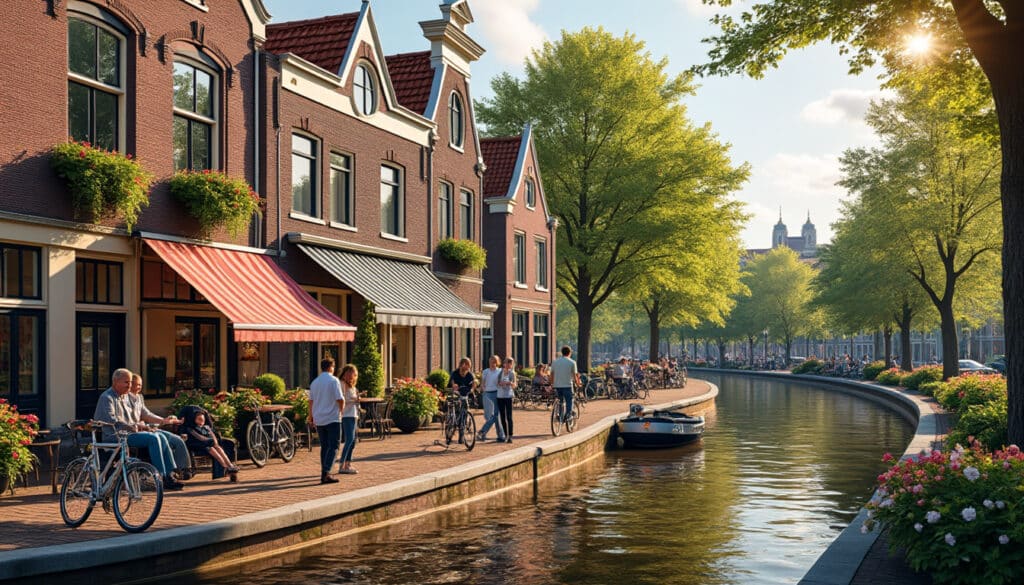
Culture & Local Life in Amsterdam
Amsterdam is a city where history intertwines with a vibrant cultural scene, creating an atmosphere that simultaneously celebrates the past and embraces innovation. The iconic canals and quaint architecture capture the essence of a bygone era, while modern-day Amsterdam pulsates…
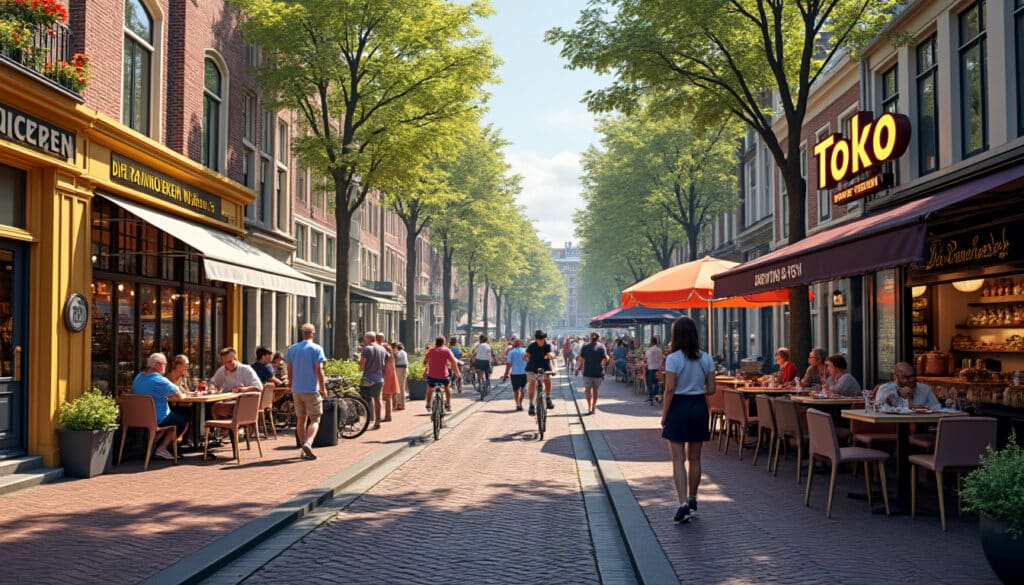
Best places to eat in Amsterdam
Amsterdam is renowned for its historic canals, vibrant arts scene, and rich cultural heritage. However, the city’s culinary landscape is an equally enticing aspect that draws in locals and tourists alike. From cozy cafés offering delightful Dutch snacks to fine…
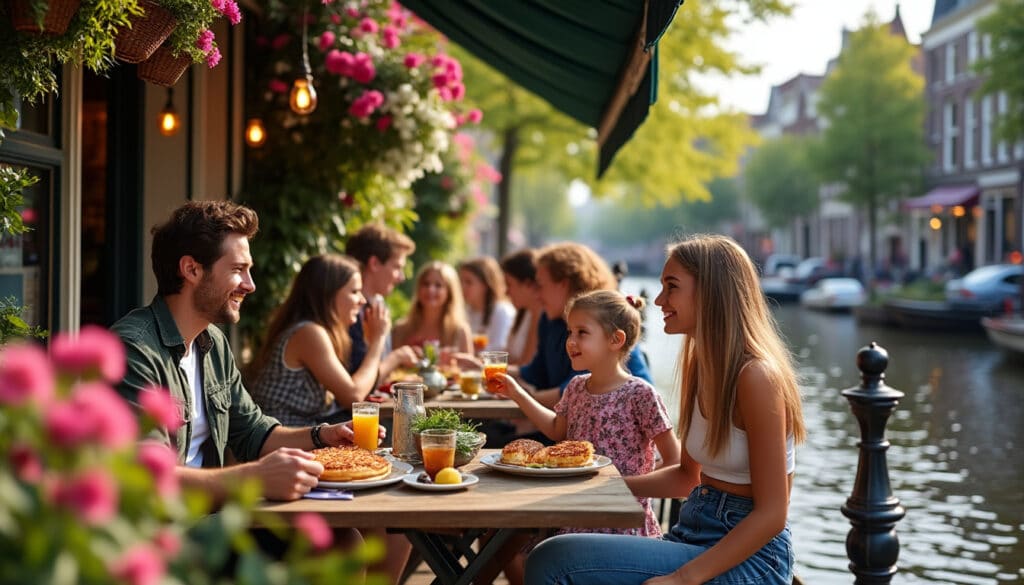
Amsterdam, a vibrant hub brimming with a confluence of cultural and culinary influences, offers a dining scene that is as diverse as it is delectable. Meal times in this bustling city are not only about satisfying hunger but are deeply…
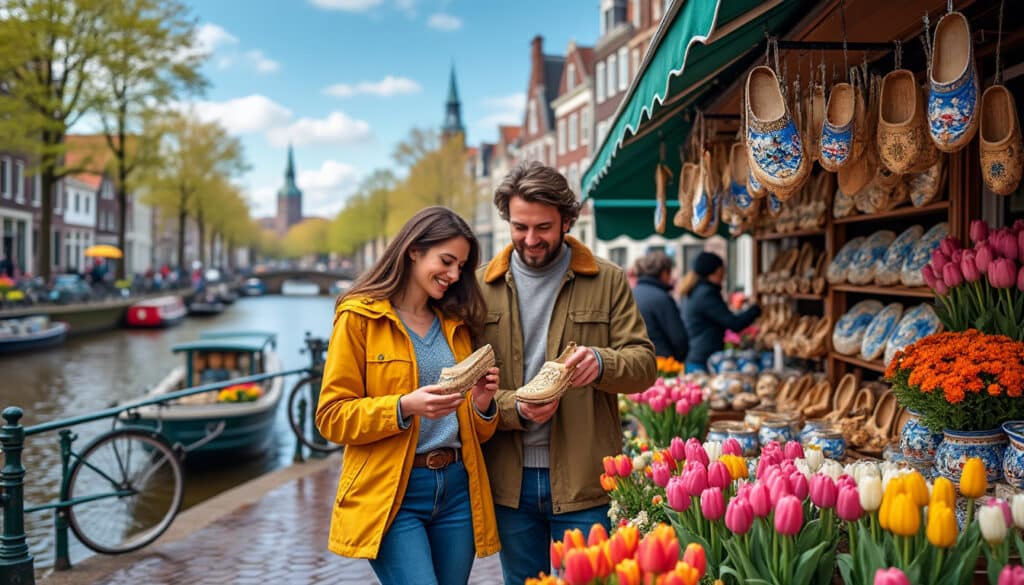
Souvenirs and shopping in Amsterdam
Amsterdam, renowned for its enchanting canals, rich history, and vibrant culture, offers a shopping experience like no other. The city’s bustling markets, quirky shops, and prestigious galleries provide a treasure trove of unique souvenirs and gifts that capture its charming…
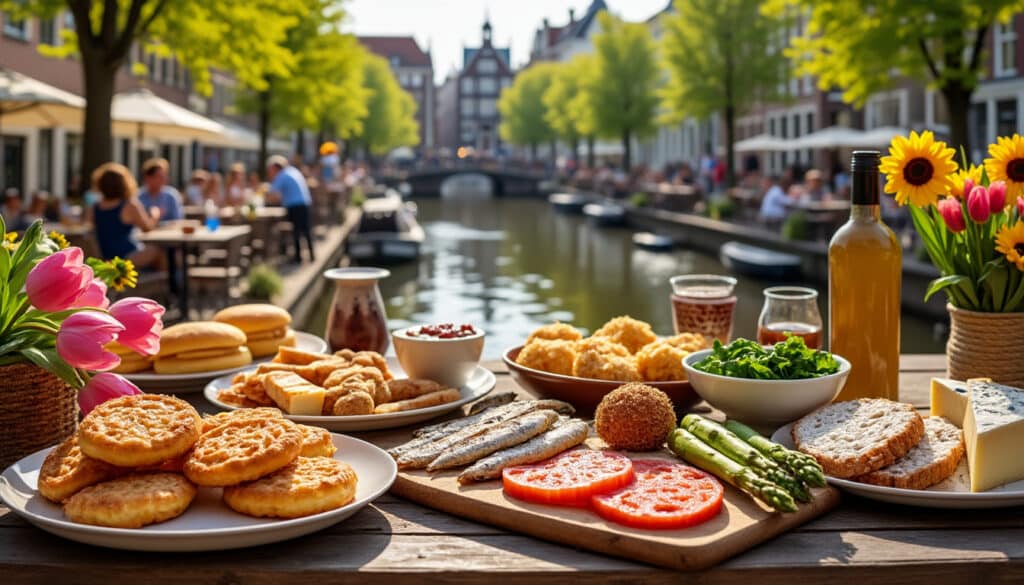
What do people eat in Amsterdam?
Amsterdam, the capital of the Netherlands, is renowned for its picturesque canals, vibrant culture, and rich history. However, what often surprises visitors is the city’s dynamic culinary scene, which perfectly marries traditional Dutch dishes with an array of international flavors.…

